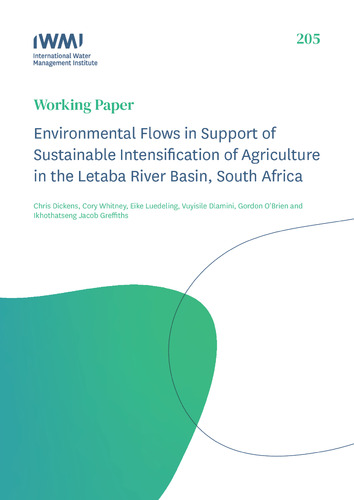Environmental flows in support of sustainable intensification of agriculture in the Letaba River Basin, South Africa
Abstract
This study evaluates the socioecological consequences of the potential trade-offs between maintaining environmental flows (e-flows) and providing water for sustainable subsistence agriculture and livelihoods to the vulnerable human communities living along the lower Great Letaba River in South Africa. Implementation of e-flows is now generally recognized as an essential part of water resources management as they are designed to ensure that sufficient water is retained in a river to protect river ecosystems and all the beneficiaries of services that arise from those ecosystems. Understanding the relationship between e-flows and the use of water for small-scale agriculture is important for the management of trade-offs.
The Letaba River Basin and it's tributary, the Great/Groot Letaba, are located in the eastern part of the Limpopo province in South Africa. This is one of the most important river basins in the region supporting both large-scale commercial and small-scale farmers. The river sustains many vulnerable human communities who depend on the ecosystem services provided by the river. Yet, the water resources of the Letaba River are heavily overutilized due to expanding developments, including upstream dams with associated offtakes mostly for irrigation.
The findings of the study indicate that irrigation water demand from subsistence agriculture in the Great Letaba Basin amounted to around 2 million cubic meters annually with median demand not exceeding 300,000 cubic meters per month. This means that irrigation water demand from smallholder agriculture only amounts to about one-tenth of the estimated e-flow requirement. However, small-scale farmers contend with an increasing crop water gap which limits irrigated agriculture, especially during the dry season. Given the need to sustainably maintain e-flows for ecological purposes, crop water gaps are only likely to increase and compromise the sustainability of irrigated agriculture. With active upstream supplementation of river flows from dams to maintain both environmental and livelihoods-oriented river flows, the crop water gap can be fully eliminated. This supplementation is not assured due to competing uses.

